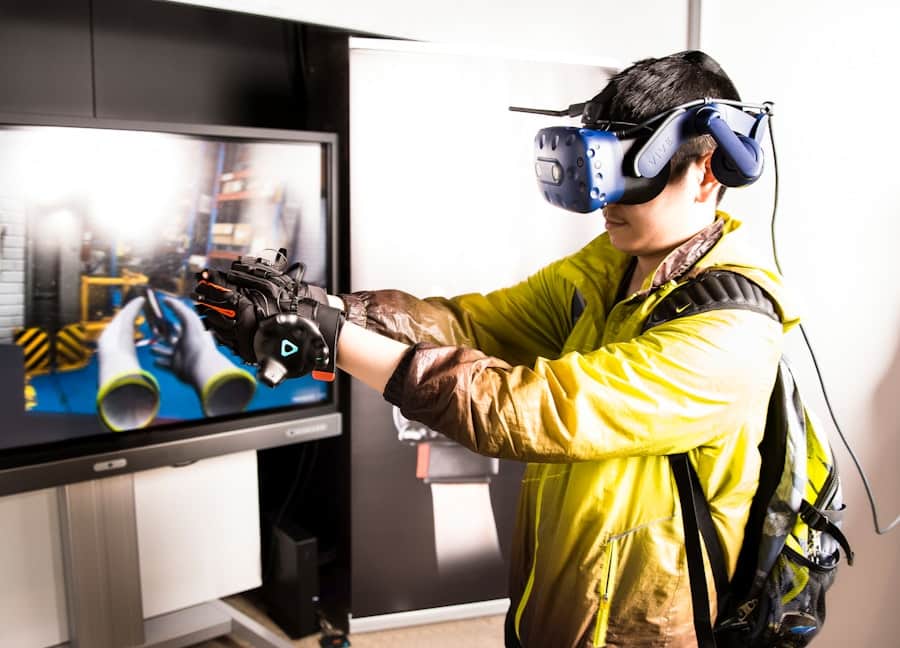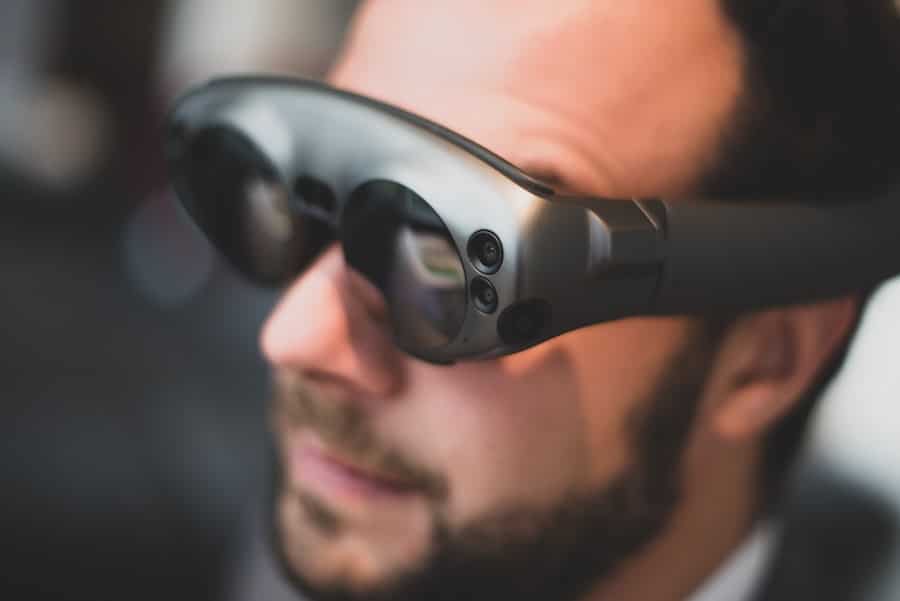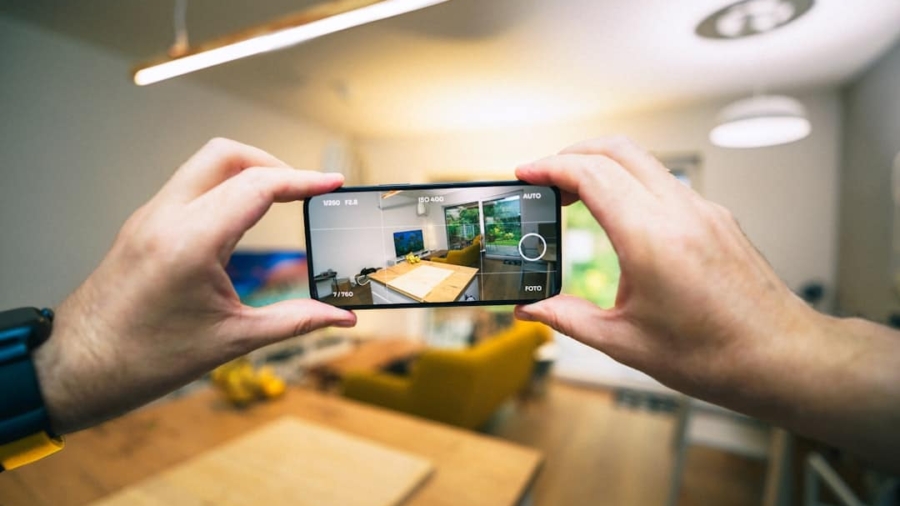The advent of augmented reality (AR) and virtual reality (VR) technologies marks a significant turning point in how we interact with digital content. Initially, these technologies were confined to niche markets, primarily in gaming and entertainment. However, as hardware has become more accessible and software development has matured, AR and VR have begun to permeate various sectors, including education, healthcare, and real estate.
The rise of mobile devices equipped with advanced sensors and cameras has further accelerated the adoption of AR, allowing users to overlay digital information onto the physical world seamlessly. Companies like Niantic, with their groundbreaking game Pokémon GO, have demonstrated the potential of AR to engage users in real-world environments, leading to a surge in interest from developers and businesses alike. On the other hand, VR has evolved from bulky headsets tethered to powerful computers to more portable and user-friendly devices.
The introduction of standalone headsets, such as the Oculus Quest series, has democratized access to immersive experiences. This shift has not only expanded the user base but has also encouraged developers to create more diverse applications beyond gaming. Industries are now exploring VR for training simulations, virtual tours, and therapeutic environments.
As these technologies continue to advance, they are poised to redefine our relationship with digital content, creating new avenues for interaction and engagement.
Key Takeaways
- AR and VR technologies are on the rise, revolutionizing the way we interact with the digital world.
- The metaverse is a virtual shared space, created by the convergence of physical and virtual reality.
- AR and VR play a crucial role in shaping the metaverse, offering immersive experiences and interactions.
- The metaverse offers diverse applications for AR and VR, from gaming and entertainment to education and commerce.
- Building the metaverse presents both challenges and opportunities, including privacy concerns and new avenues for innovation.
Understanding the Metaverse
The concept of the metaverse is often described as a collective virtual space that merges physical and digital realities. It encompasses a vast array of interconnected virtual environments where users can interact with each other and digital objects in real-time. The term gained traction through science fiction literature and has been popularized by tech visionaries who envision a future where the metaverse serves as an extension of our daily lives.
In essence, the metaverse is not just a single platform but a convergence of various virtual worlds, social networks, and digital economies that allow for seamless transitions between experiences. At its core, the metaverse is built on principles of interoperability and user-generated content. This means that users can create, own, and trade digital assets across different platforms.
Blockchain technology plays a crucial role in this ecosystem by providing a decentralized framework for ownership and transactions. As users invest time and resources into building their identities and assets within the metaverse, the potential for economic growth becomes apparent. Virtual real estate, digital art, and non-fungible tokens (NFTs) are just a few examples of how individuals can monetize their presence in this expansive digital landscape.
The Intersection of AR and VR in the Metaverse

The intersection of AR and VR within the metaverse creates a rich tapestry of experiences that blend the physical and digital realms. While VR immerses users in entirely virtual environments, AR enhances the real world by overlaying digital elements onto it. This duality allows for innovative applications that can cater to diverse user preferences and contexts.
For instance, a user might don a VR headset to explore a fantastical world while simultaneously using AR glasses to receive contextual information about their surroundings in real-time. This synergy between AR and VR can lead to more engaging social interactions within the metaverse. Imagine attending a virtual concert where you can experience the performance through VR while simultaneously interacting with friends who are using AR to share their perspectives on the event.
Such experiences not only enhance entertainment but also foster community building by allowing users to connect in ways that transcend geographical boundaries. As developers continue to explore this intersection, we can expect increasingly sophisticated applications that leverage the strengths of both technologies.
Applications of AR and VR in the Metaverse
The applications of AR and VR within the metaverse are vast and varied, spanning multiple industries and use cases. In education, for example, immersive learning experiences can transport students to historical events or complex scientific environments, making abstract concepts tangible. Virtual classrooms can facilitate collaboration among students from different parts of the world, breaking down barriers to access and enhancing educational outcomes.
Institutions are already experimenting with these technologies to create interactive curricula that engage students in ways traditional methods cannot. In healthcare, AR and VR are revolutionizing training for medical professionals.
Additionally, AR can assist in surgeries by overlaying critical information directly onto a surgeon’s field of view, improving precision and outcomes. Beyond training, these technologies are also being used for patient rehabilitation and therapy, providing immersive environments that can help patients overcome phobias or recover from injuries through gamified exercises.
Challenges and Opportunities in Building the Metaverse
While the potential of the metaverse is immense, several challenges must be addressed to realize its full capabilities. One significant hurdle is ensuring interoperability among various platforms and technologies. Currently, many virtual worlds operate in silos, limiting users’ ability to transfer assets or identities across different environments.
Establishing common standards and protocols will be essential for creating a cohesive metaverse where users can seamlessly navigate between experiences. Another challenge lies in addressing privacy and security concerns. As users engage more deeply with the metaverse, they generate vast amounts of data that could be vulnerable to breaches or misuse.
However, these challenges also present opportunities for innovation. Companies that can develop solutions for interoperability or create secure frameworks for data management will be well-positioned to lead in this emerging landscape.
The Impact of AR and VR on Social Interactions in the Metaverse

AR and VR technologies are fundamentally reshaping social interactions within the metaverse by providing new avenues for connection and collaboration. Traditional social media platforms often rely on text-based communication or static images; however, the immersive nature of AR and VR allows users to engage with one another in more dynamic ways. Virtual gatherings can simulate real-life interactions, enabling users to share experiences as if they were physically present together.
Moreover, these technologies foster inclusivity by allowing individuals with disabilities or those who may have difficulty participating in physical social settings to engage meaningfully within virtual environments. For instance, avatars can be customized to reflect users’ identities or preferences, providing a sense of agency that may not be available in traditional social contexts. As social interactions evolve within the metaverse, we may witness new forms of community building that transcend geographical limitations and cultural barriers.
Creating Immersive Experiences in the Metaverse with AR and VR
Creating immersive experiences in the metaverse requires a deep understanding of user engagement principles combined with cutting-edge technology. Developers must consider factors such as spatial audio, haptic feedback, and realistic graphics to craft environments that captivate users’ senses. For example, a virtual reality game might incorporate spatial audio cues that change based on a player’s position within the environment, enhancing immersion by making sounds feel as though they are coming from specific directions.
Additionally, user-generated content plays a pivotal role in enriching these experiences. Platforms that empower users to create their own environments or assets contribute to a vibrant ecosystem where creativity flourishes. This not only enhances user engagement but also fosters a sense of ownership over one’s virtual identity and space.
As more creators enter the metaverse, we can expect an explosion of diverse content that reflects various cultures, interests, and artistic expressions.
The Future of AR, VR, and the Metaverse
Looking ahead, the future of AR, VR, and the metaverse is poised for exponential growth as technological advancements continue to unfold. Innovations such as 5G connectivity will enable faster data transmission rates, reducing latency issues that currently hinder immersive experiences. This will allow for more complex interactions within virtual environments without compromising performance.
Furthermore, as artificial intelligence (AI) becomes increasingly integrated into these technologies, we may see more personalized experiences tailored to individual preferences and behaviors. AI-driven avatars could learn from user interactions to provide more meaningful engagement or assist in navigating complex virtual spaces. The convergence of these technologies holds immense promise for creating a metaverse that is not only immersive but also responsive to users’ needs.
As we venture into this uncharted territory, it is essential to approach the development of AR and VR within the metaverse with a focus on ethical considerations and inclusivity. Ensuring that these technologies serve as tools for empowerment rather than exclusion will be crucial in shaping a future where everyone can participate in this exciting digital frontier.
In exploring the convergence of augmented reality (AR) and virtual reality (VR) in building the metaverse, it’s interesting to consider how these technologies can enhance user experiences across various platforms. For instance, the integration of AR and VR can significantly impact social media interactions, as highlighted in the article on how Instagram adds a dedicated spot for your pronouns. This feature not only personalizes user profiles but also reflects the evolving nature of digital identity, which is a crucial aspect of the metaverse experience.
FAQs
What is the Metaverse?
The Metaverse is a collective virtual shared space, created by the convergence of virtually enhanced physical reality and physically persistent virtual reality.
What is AR (Augmented Reality) and VR (Virtual Reality)?
AR is a technology that superimposes a computer-generated image on a user’s view of the real world, while VR is a computer-generated simulation of an environment that can be interacted with in a seemingly real or physical way.
How do AR and VR converge in building the Metaverse?
AR and VR technologies are converging in the development of the Metaverse by creating immersive and interactive virtual environments that blend elements of the physical and digital worlds.
What are some examples of AR and VR applications in the Metaverse?
Examples of AR and VR applications in the Metaverse include virtual social spaces, immersive gaming experiences, virtual commerce platforms, and interactive educational environments.
What are the potential benefits of the Metaverse built on AR and VR technologies?
The potential benefits of the Metaverse built on AR and VR technologies include enhanced communication and collaboration, new forms of entertainment and media consumption, and innovative ways of conducting business and education.

